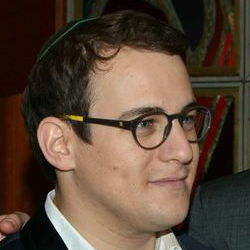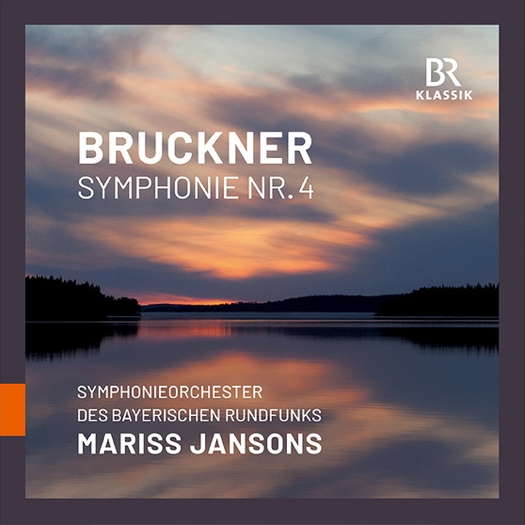- Johansen
- Democratic People's Republic of Korea
- Monaco
- Endre Anaru
- Martinu
- Arif Melikov
- Tadashi Imai
- Josip Slavenski
 SPONSORED: Ensemble. Melting Rhapsody - Malcolm Miller enjoys Jack Liebeck and Danny Driver's 'Hebrew Melody' recital, plus a recital by David Aaron Carpenter.
SPONSORED: Ensemble. Melting Rhapsody - Malcolm Miller enjoys Jack Liebeck and Danny Driver's 'Hebrew Melody' recital, plus a recital by David Aaron Carpenter.
All sponsored features >>
 DISCUSSION: John Dante Prevedini leads a discussion about Composers, individuals or collective?, including contributions from David Arditti, Halida Dinova, Robert McCarney and Jane Stanley.
DISCUSSION: John Dante Prevedini leads a discussion about Composers, individuals or collective?, including contributions from David Arditti, Halida Dinova, Robert McCarney and Jane Stanley.

Resplendent Sound
STEPHEN FRANCIS VASTA has mixed feelings
about Mariss Jansons' 2008 recording
of Bruckner's 'Romantic' Symphony
'I enjoyed the focus and resonance of the bass strings, providing a solid support for the full orchestra; the lovely clarity of the woodwind principals - the bright, forward oboes and clarinets suggest the organ's reed stops - and the brass choir's full-bodied depth.'
The Bavarian Radio Symphony has been transformed in the decades since its Deutsche Grammophon days. The strings have lost the grainy edge of the Kubelik era, producing a warm, vibrant ensemble sonority. The woodwinds are more polished now, less rustic; the horns velvety and focused; the heavy brasses firm and powerful. The ensemble's solid, full-bodied sound is well suited to Bruckner's large-scale writing - far more so than it was in Eugen Jochum's first cycle - and Mariss Jansons takes full advantage of this in this 2008 concert recording of the Romantic.
Listen — Bruckner: Bewegt, nicht zu schnell (Symphony No 4 in E flat)
(track 1, 5:32-6:03) © 2009, 2020 BRmedia Service GmbH :
From the evocative opening horn call, Jansons lays out the first movement in broad, dramatic arcs; the lyrical, pastoral moments that give the symphony its subtitle build inexorably into the climactic tuttis. The quiet tremolos generate anticipation, with Bruckner's layered orchestrations mimicking changes of organ registration and the opening and closing of the swell box.
Listen — Bruckner: Bewegt, nicht zu schnell (Symphony No 4 in E flat)
(track 1, 10:46-11:45) © 2009, 2020 BRmedia Service GmbH :
On the question of the second theme, Jansons plants himself squarely in the 'undecided' category. The first time around, he favors the violins' little pastoral phrases, subduing the cello countertheme; in the recap, he highlights the legato 'countertheme', with the violin phrases dancing behind it. I'm assuming this was deliberate, and not an accident 'in the moment'.
The 'slow' movement, marked Andante quasi allegretto, maintains this high level. The warm, burnished cellos intone the first theme with dignity, and you can feel the suggestion of its underlying sombre tread through the movement's successive episodes: the strings' searching transitional chorale; the violas' aching second theme; and the affirmative lyrical paragraphs still further on.
Listen — Bruckner: Andante quasi allegretto (Symphony No 4 in E flat)
(track 2, 1:41-2:32) © 2009, 2020 BRmedia Service GmbH :
For two movements, then, despite a couple of blemishes of attack - and, early on, the hint of a false bass entrance at 1:36 - this shapes up to be the performance of a lifetime. Unfortunately, we're not done - the symphony has four movements. The hunting-horn Scherzo is moderately paced, which isn't a bad thing, but, both times around, the meno mosso passages lose some momentum, and Jansons doesn't regain it. The pastoral Trio sings simply and smoothly, at least.
Listen — Bruckner: Trio (Symphony No 4 in E flat)
(track 3, 4:50-5:38) © 2009, 2020 BRmedia Service GmbH :
The Finale is a problem, and not only for Jansons: it proceeds in fits and starts, punctuated by bombastic, brainless climaxes. The conductor is sensitive and open-hearted through most of the movement, and manages to reduce the bombast quotient, but the tuttis still come off as emptyheaded padding. (Bruckner's earlier, completely different Finale is, to my mind, a far more appealing and effective movement.) He does, however, bring off my favorite tricky moment at 9:08: the return of the brief third theme: the brasses modify their forte in their chorale, and the strings, taking over, almost equal them in tonal splendor.
Listen — Bruckner: Finale (Symphony No 4 in E flat)
(track 4, 8:52-9:44) © 2009, 2020 BRmedia Service GmbH :
Particularly under headphones, the sound is resplendent. I enjoyed the focus and resonance of the bass strings, providing a solid support for the full orchestra; the lovely clarity of the woodwind principals - the bright, forward oboes and clarinets suggest the organ's reed stops - and the brass choir's full-bodied depth.
Copyright © 7 July 2020
Stephen Francis Vasta,
New York, USA

CD INFORMATION - BRUCKNER: SYMPHONY NO 4 - MARISS JANSONS
FURTHER INFORMATION - ANTON BRUCKNER
FURTHER INFORMATION - MARISS JANSONS


